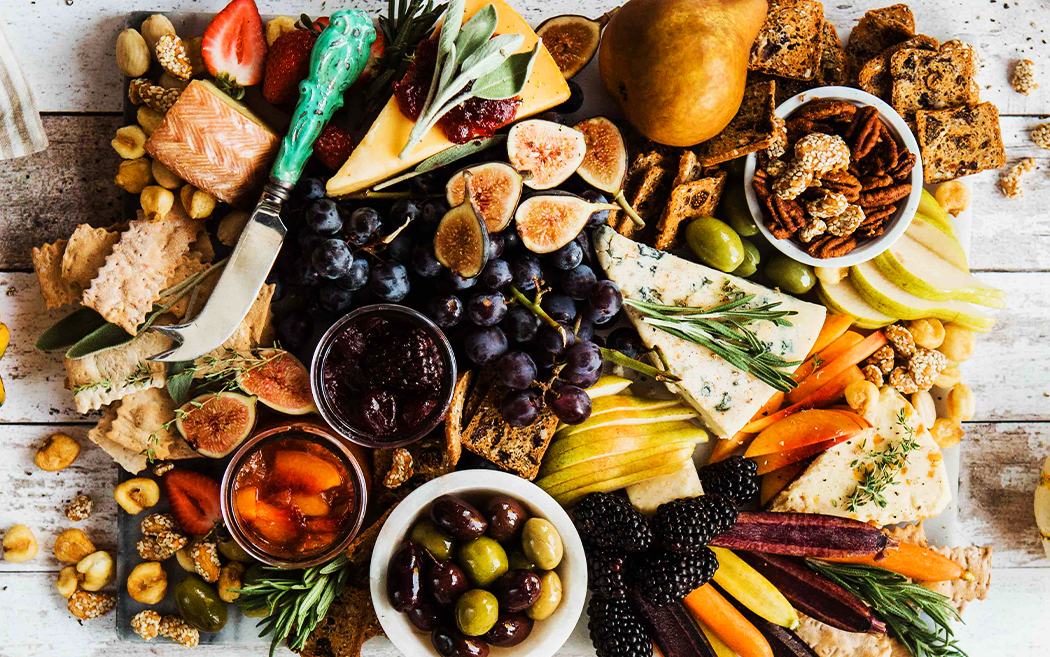Food and Beverage Trends: Looking Ahead to 2023

The forecasted food and beverage trends for 2023 could create hugely successful products, but they still have to taste good.
While the last few years have been a combination of highs and lows for the food and beverage industry, 2023 is looking to be a time of innovation and product line expansion. Consumers are craving exciting new flavors, plant-based products are booming, and non-traditional food & beverage trends are making their way into the mainstream—and that’s just the beginning.
Leverage the Upcoming Flavor Trends of 2023
When it comes to fruit flavors, yuzu and tamarind are predicted to shine. Yuzu, also known as the Japanese lemon, has been described as a cross between lemons, mandarin oranges, and sometimes even grapefruit. Tamarind, on the other hand, is being eyed as an ingredient in sweet and spicy flavor combinations. The fruit itself can be sweet, sour, tart, or even tangy. When combined with ingredients like chili peppers, it creates an unforgettable contrast of flavors.
Mushroom and ube are the trending vegetal flavors forecasted for 2023. Those who are unfamiliar with the variety of mushroom flavors may find this prediction surprising. However, mushrooms are becoming more popular for their umami quality. Ube, on the other hand, has a warm, vanilla-like flavor that can be used in both savory and sweet products. While ube is a comfort food to cultures around the world, U.S. consumers are finding it exciting and adventurous.
Floral and botanical flavors, while relatively new to the food and beverage industry, is expected to grow in popularity as well. Not only do some of them double as functional ingredients, but they can also provide elevated flavor profiles that are new to many consumers.
Forecasted Trending Ingredients of 2023
On top of their subtle umami flavor, mushrooms are expected to grow in popularity because of their use in plant-based alternative products. Mushrooms are an innovative ingredient that can provide a meaty texture and savory flavor to both plant-based and traditional products.
Avocado oil is expected to become a more mainstream ingredient in CPG food and beverage products for many reasons. Its high oleic fatty acid content and high smoke point may even help it replace other ingredients like canola and safflower oil.
Healthier swaps are also behind the growing popularity of ingredients like kelp and dates. The former is a win when it comes to sustainability since it grows quickly and doesn’t need fresh water or added nutrients. On top of that, it’s nutritious and can be used in a variety of ways (noodles, chips, sauces, etc.).
Dates are being used as a sweetener alternative. Often referred to as “nature’s candy,” dates contain fiber, minerals, vitamins, and antioxidants. While they do contain sugar, their additional nutrients are still very appealing to consumers. Plus, their versatility makes them practical additions to baked goods, pastes, syrups, and more.
Plant-Based, Alternative Dairy, and Alternative Meats On the Rise
Plant-based food and beverage products were easily one of the biggest trends of 2022, and that’s expected to continue into 2023. The pandemic caused a shift away from traditional “diet” products and towards “wellness” products—and that’s included a variety of plant-based, dairy alternatives, and even meat alternative products.
Mike Kostyo, trendologist and associate director at Dataessential, told Food and Beverage Insider that younger generations are moving towards plant-based foods. When it comes to new products, that could look like plant-based chicken, seafood, and a variety of alternative dairy products. “When it comes to non-alcoholic beverages, alternative milks continue to dominate the space, with oat milk quickly becoming the default option.”
Wellness and Functional Products Go Mainstream in 2023
With the rise of plant-based food and beverage products, it should come as no surprise that wellness products in general are expanding. The difficulty with these particular products, however, is the careful balance of flavor and effectiveness. Consumers want to eat and drink healthy products, but these products still need to be appetizing.
Future Market Insights says, “The functional food ingredients market is estimated at US$112.60 Bn in 2023 and is expected to reach $215.36 Bn by 2033, growing at a 6.7% CAGR during the forecast period. Increasing demand for clean-label items, changing laws in the food and beverage industry, and rising customer awareness are all factors driving the market growth.”
With that in mind, these brands are looking for innovative ways to improve the effectiveness of products while also improving the overall customer experience. One of the most innovative ways some brands are doing this is through flavor.
Not only do specific flavors appeal to different customers, but when functional ingredients like botanical terpenes are used, they can also promote specific effects. From more subtle things like nostalgia to effects like relaxation and energy, innovative flavor ingredients can have a big impact. Customers are particularly interested in wellness products that provide brain, immunity, and mood support.
Whether a brand is experimenting with trending flavors, ingredients, or even a new product type, consumers will always prefer to purchase food and beverage items they know taste good. Since many of these products require a certain amount of education about wellness-related ad claims, it creates an opportunity to also educate people about any taste-related ad claims and quality food awards.
Many brands are likely to leverage these forecasted trends, but CPG marketing that substantiates taste claims with food awards is more likely to win new customers and retain current ones as well.
Want insight from an expert in the industry? Tune in to Using Functional Ingredients to Promote Brain Health. In this episode of our podcast, Beyond the Shelf, Jonathan Wolfson of Brainiac Foods shares insights into the ever-growing better-for-you market. He also discusses why brain health is often left out of the conversation when discussing health & wellness in food & beverages, and how the past three years have shifted consumers’ understanding and interest in functional ingredients.
To stay up-to-date with trends and news in the food & beverage industry, follow us on social media: Facebook, Twitter, Instagram, and LinkedIn – and check out more of our blogs.
